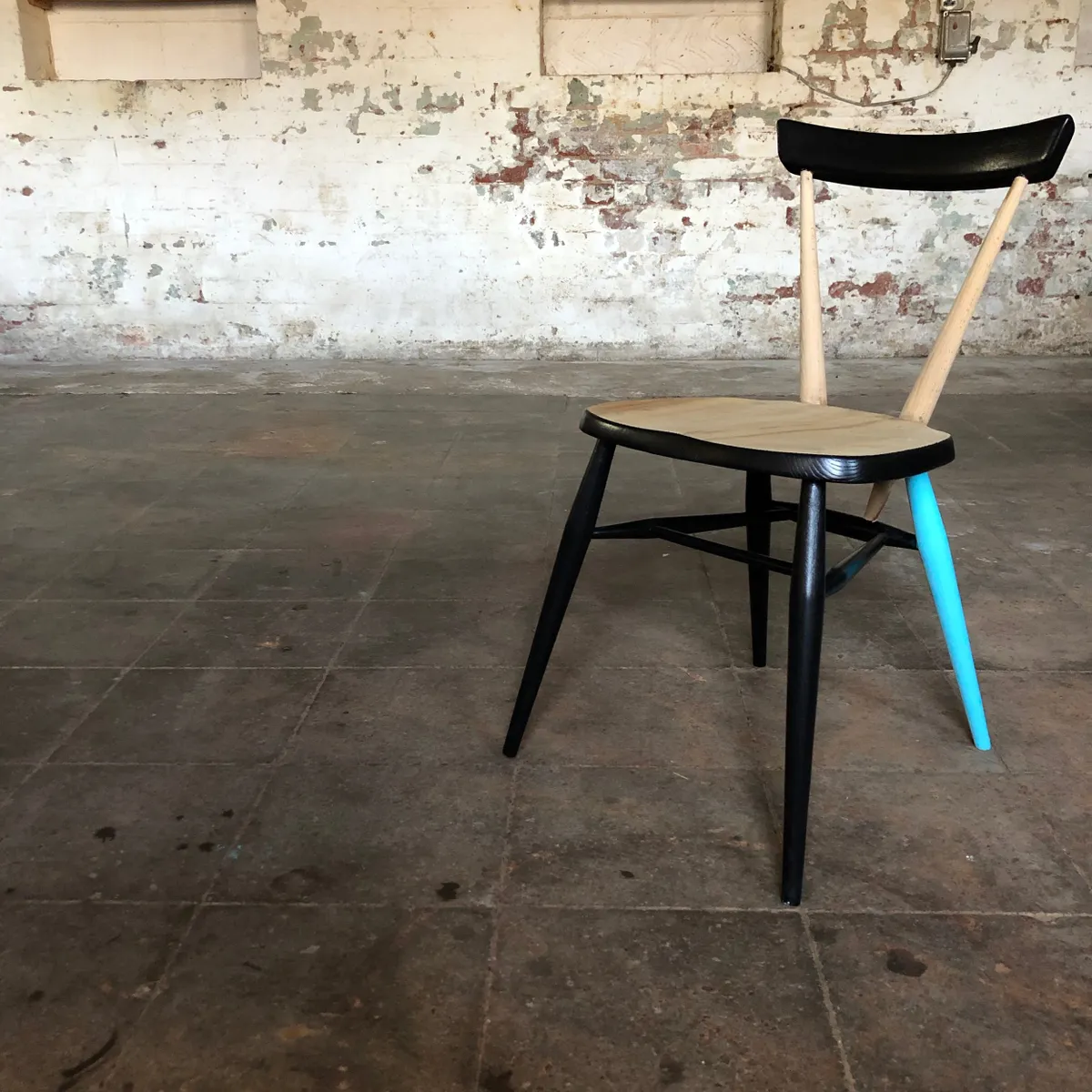Until nine or 10 years ago, I’d never really had much to do with furniture. I bought it when I needed it, and I knew what I liked. But as for design, furniture restoration or any of the skills I have now – nothing. That all started to change when I was 39 or 40, when I was working with disadvantaged young people through my charity, Street Dreams. We ran lots of projects to give these guys an outlet, while also giving them valuable skills. One of the projects we did was to fix up and sell on old laptops that came to us from BT.
One day, along with some computers, we were given a desk that we decided to decorate. It took four or five evenings – all the while I was teaching myself, as much as the kids, what to do. We found the process very rewarding. I had the bug and I wanted to know more. Which, in the town I called home then, wasn’t hard…
You might also like how to upcycle a chest of drawers
High Wycombe has a rich tradition of furniture making that I had been totally unaware of. As I educated myself about its history, I learned that I was based in the same town as Ercol, G-Plan and Parker Knoll! I thought it would be a good idea for me and some of my young people to learn these heritage skills, so I put some feelers out.
We were inundated with offers from local people who wanted to pass their traditional skills down. There were people from the WI and Help the Aged [now Age UK] right through to master furniture restorers, including some who regularly work on furniture in the Royal Collection. They taught us (both the young people and myself) how to re-cane, upholster, French polish, wood turn and more. All things I had known nothing about previously.
You might also like how to thrift furniture for your home
Soon, we were picking up vintage Ercol chairs for £3.50 and perfecting our skills on them. As a lot of the charitable funding began to dry up, our furniture restoration work could continue because we could sell the end result on for a bit of revenue. And so, eventually, it became all about furniture.

The learning curve was – and still is – just incredible. And I want to learn even more from the master craftspeople out there who I admire so much. There’s a chap who does japanning who I’m keen to learn from and there’s someone in Oxford who does an advanced French polishing course; I can’t wait to do that.
Through what I’ve learned, I’ve come to see British furniture the same way a football fan might cheer for their team. Every new skill I pick up and story I hear the more passionate I become. And I know there’s still so much more out there for me to discover.
If you're interested in furniture, check out our round-up of the best furniture upcycling and restoration courses available online and in person.
More from Jay Blades:
How I got in to furniture restoration
My favourite small-scale artists
How I found fame on Money for Nothing
Furniture reupholstery: Jay Blades on how to make your fabric go further
